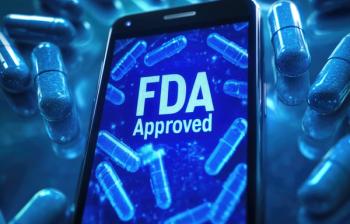
The Pharmacological Treatment of Diabetes
Peter Salgo, MD: So what are the current [pharmacological] options that are out there right now?
Helena W. Rodbard, MD: We have lots of different options. The traditional one is metformin—after lifestyle modification, most guidelines are going to recommend metformin. It’s a drug that [has] been around for a long time, [is] generally well tolerated, and [is] very inexpensive.
Peter Salgo, MD: It’s an oldie but a goodie.
Helena W. Rodbard, MD: It’s an oldie and a goodie. Most people tolerate it very well.
Peter Salgo, MD: See, he’s even nodding and smiling.
James T. Kenney, RPh, MBA: Absolutely. Well it’s a first-line [treatment]. I mean, we expect that from everyone, but it’s a good starting point, [and] it’s easy for the patient. In some cases, the coinsurance or co-pay [is] maybe $5, so it’s very affordable for patients as well.
Peter Salgo, MD: So then we move on.
Helena W. Rodbard, MD: Then we move on. And then things become more complicated because we have lots and lots of choices, which is a good thing and a bad thing at the same time. From my perspective, it’s a good thing because we have more resources, we have better drugs to offer our patients. So it really will depend on what is the level of hemoglobin A1C [glycated hemoglobin], and that’s 1 of the things that I really like very much about the AACE [American Association of Clinical Endocrinologists] guidelines, because they stratify, depending on the level of hemoglobin A1C. So if somebody presents with a hemoglobin A1C of less than 7.5%, usually monotherapy will be appropriate for a short period of time, and the patient needs to be re-evaluated. As Om said, we don’t want to fall into inertia, which has happened so often and still does happen. And if somebody starts with a hemoglobin A1C between 7.5% [and] 9%, it is very appropriate to initiate dual therapy. And what are the drugs? Well, it can be metformin and it can be 1 of the other classes of drugs: GLP-1 [glucagon-like peptide-1] receptor agonists, the DPP-4 [dipeptidyl-peptidase-4] inhibitors, SGLT2s [sodium-glucose cotransporter 2s]. We tend to stay away from sulfonylureas in general.
Peter Salgo, MD: Why is that?
Helena W. Rodbard, MD: Well, there are a number of issues. Hypoglycemia is 1 of them; weight gain is another issue. And we’re already dealing with people [who] have a weight problem by and large.
Peter Salgo, MD: Now, you mentioned some letters here, some word salad, or alphabet salad. Those are letters that weren’t even [dreamed] of in my philosophy back when. They’re new.
Helena W. Rodbard, MD: Neither in mine. So we’ve seen this field exploding, and there are just so many new options—better classes of drugs that are really going to help. Not just to treat diabetes [and] to forestall the complications but even to protect the pancreas to a certain extent. I mean, it’s talking about people with type 2 diabetes right now. Type 1 diabetes you treat with insulin; there is no other.
Peter Salgo, MD: I was to bring this up. I mean, you didn’t really mention insulin until the end.
And I know that when you mention insulin to patients, they often pull away. But isn’t insulin a good drug? It’s cheap.
Helena W. Rodbard, MD: Well, no longer. It’s not cheap anymore, but it’s a great drug.
Peter Salgo, MD: Well, how about it’s relatively cheap.
Helena W. Rodbard, MD: It is a great drug, and that was going to be the next category—people [who] presented with type 2 diabetes with a hemoglobin A1C greater than 9%. It is appropriate to consider insulin as first-line therapy, particularly if people are having symptoms. If they’re having symptoms the first thing you want to do is eliminate the [glucose] toxicity. That means that all the symptoms associated with high blood glucose level.
Peter Salgo, MD: The patient reaction to insulin that I’ve seen is, “Oh my gosh.” One it’s a shot; and 2, “My great-aunt Agnes got put on [it when she had] diabetes, and she died 2 years later.” How do you deal with that?
Om P. Ganda, MD: Well, I think, again, it’s a matter of education—education, education, education. As Dr. [Elliott] Joslin said—who, by the way, [would be] 150 years old today if he’d lived. But anyway, I think we have a lot of choices, and we’re very fortunate that we have some new very good choices, particularly the 3 classes of drugs that we were just discussing: the DPP-4 inhibitor, the GLP-1 receptor analog, the SGLT2 inhibitors.
Of course, patients will always prefer a pill given the choice, rather than injection, even though when we tell them how easy it is to take this injection—a little pen with a tiny, tiny needle. They’ll accept it, I think, if they need it.
Peter Salgo, MD: Yeah, but it’s still a needle. You know we see needles every day.
Om P. Ganda, MD: The whole concept of needle is really ingrained.
Peter Salgo, MD: And you have just presented a patient with a new diagnosis with a high sugar, with a needle. [It’s] not only a needle, but they’ve got to do it themselves. You understand that, right? I mean that’s a little fearsome.
Om P. Ganda, MD: Right. It’s the initial fear, and we worry about. You know, I think 90% of the patients are seen in [a] primary care physician’s office. We don’t have enough endocrinologists to see all these new patients with diabetes [who] are coming up all the time. So it comes down to resources. Do you have a nurse sitting next to you in the next office, where she can show the patient how easy it is to take an injection if they have to? But again, I think even if they are given their choice, they will always prefer a pen over an injection.
Peter Salgo, MD: Sure. You know what amazes me is the kids—with type 1, usually. They take their own shots. They monitor their own glucose.
Helena W. Rodbard, MD: Amazing.
Peter Salgo, MD: They’re got their own glucometers, and it’s us grown-ups [who] are a problem.
Helena W. Rodbard, MD: I know, and I see a lot of people [who] are afraid. I’ll tell you what I do in my practice. I just give the first an injection in the office. I show the patients the pen. I show the 4-mm tiny, tiny needle. And they look at it and I say, “Yup, now you’re going to give yourself the first injection.” And I actually guide their hand, so they give themselves the first injection in the office. And then invariably they look at me and they say, “Is that all there is to it?” I say, “Yes, I told you so.” So it’s easy.
Peter Salgo, MD: Getting to the “I told you so” is the critical part.
Helena W. Rodbard, MD: Right.
James T. Kenney, RPh, MBA: Well, technology is so advanced now with insulin in terms of the insulin types as well as the devices. There are disposable pumps that folks can use. They make it very easy. And I think we have a generation, an older generation, and you said earlier when you said it’s just a touch of sugar. There’s this older generation that was threatened with the needle if they didn’t toe the line by the physician.
Peter Salgo, MD: Right, I was going to say that.
James T. Kenney, RPh, MBA: So you’ve sort of got to get beyond that with folks. I think [for] the younger generation, that doesn’t resonate. But for those older Medicare patients, well, if you go on insulin, the end is near because that was the critical punishment of what you’re going to have to face.
Peter Salgo, MD: You threaten them with the needle.
James T. Kenney, RPh, MBA: Absolutely.
Peter Salgo, MD: Now, I saw your face, and there was a little smile when she said insulin is no longer cheap. What’s going on with insulin?
James T. Kenney, RPh, MBA: Well, there’s no question the price of insulin has gone up dramatically. There’s been a lot of excitement in Washington; there [have] been hearings to figure out why the insulin price is increasing. We have had some insulin products launch recently that are less expensive. We don’t have biosimilars necessarily for insulin, but we have follow-on protein products as they’re defined. So there’s different terminology. But they’re similar. So there are biologics; they are less expensive. [Eli] Lilly [and Company] has launched a biologic similar to the Lantus product, the Basaglar. And then we have Sanofi-[Aventis LLC], [which] just announced they’re going to do a $99 insulin special for patients. So patients can actually sign up for a subscription program and get an insulin and pay cash for it at $99. But some of the insulins are $500, $600, $700 a month for patients.
Peter Salgo, MD: You’ll forgive me, but insulin has been out there since the early part of the 20th century.
James T. Kenney, RPh, MBA: Yes.
Peter Salgo, MD: This has been rung out, and the patent should be long expired. So please tell me why it costs anything near that.
James T. Kenney, RPh, MBA: It’s just the technology and the price increases from the companies over the years that [have] driven the price up. And as the new technology launches, it launches a new phase, if you will, of pricing, and it’s competitive. There’s a lot rebating in the marketplace, which there’s a lot of controversy about. [This] may drive up the cost of the insulins because the price goes up so that they can pay the rebates back. It’s really kind of a vicious circle.
Peter Salgo, MD: You understand why this makes people crazy.
James T. Kenney, RPh, MBA: Absolutely.
Peter Salgo, MD: This is insane.
Om P. Ganda, MD: Jim, you will really agree with me that I think it’s very complicated how the costs of insulin have been going up and up and up, and there’s no generic insulin, you know, 100 years after the discovery of insulin.
James T. Kenney, RPh, MBA: Absolutely.
Om P. Ganda, MD: And now, yeah, things are happening. From what happened in the Congress a couple of weeks ago, prices started coming down a little bit. We need to go a lot more. This is a lifesaving drug. Think about people who ration their insulin. They don’t take it.
Peter Salgo, MD: It’s instead of their food.
Om P. Ganda, MD: They want to make it a lot stronger.
Helena W. Rodbard, MD: That’s right. Exactly. It happens.
James T. Kenney, RPh, MBA: Absolutely. If you have a patient with a coinsurance on insulin, what if they have a 50% coinsurance [and] they have an [Affordable Care Act state marketplace health] exchange plan. They might be paying $300 or $400 a month just for insulin.
Newsletter
Stay ahead of policy, cost, and value—subscribe to AJMC for expert insights at the intersection of clinical care and health economics.







































